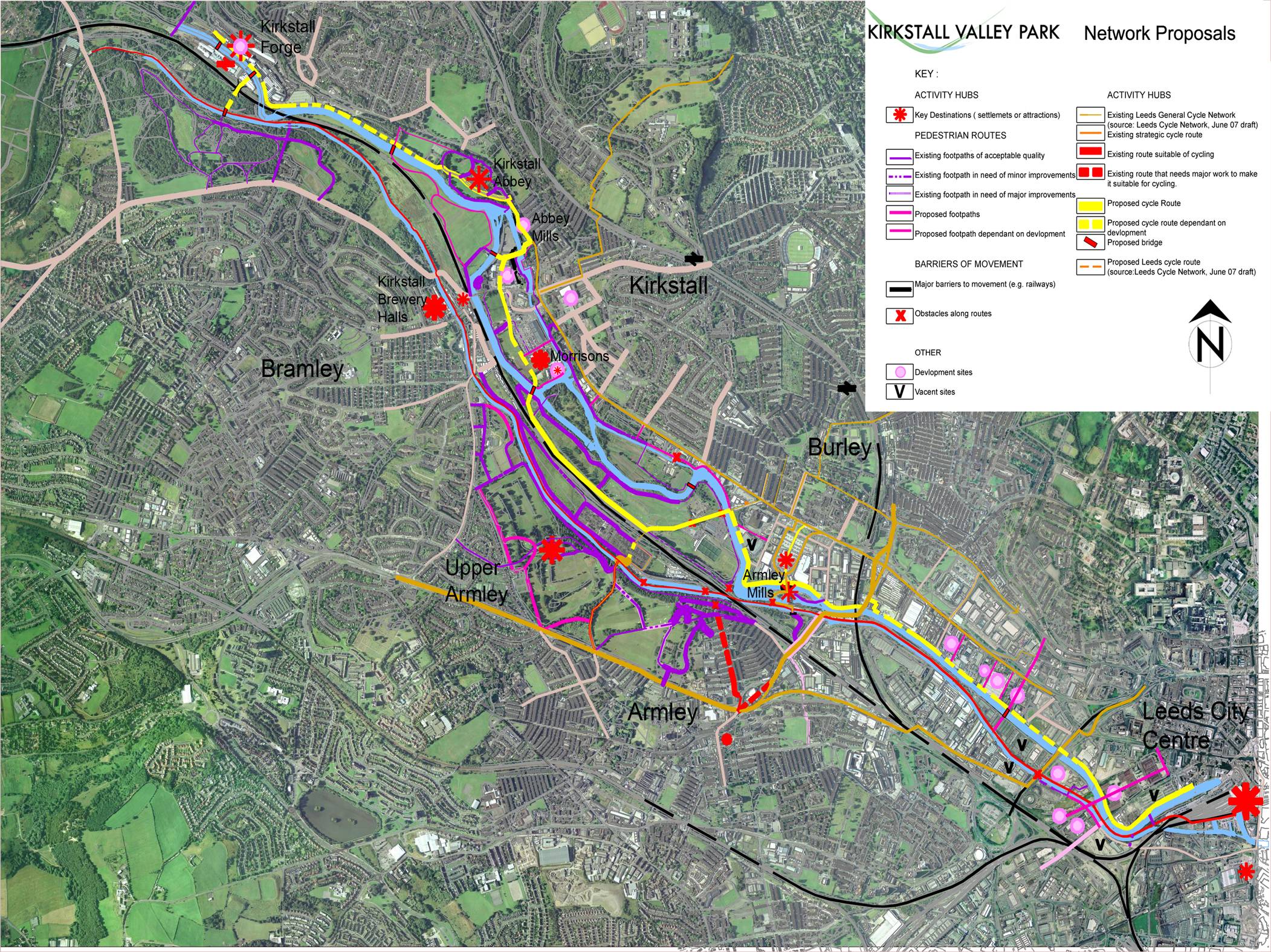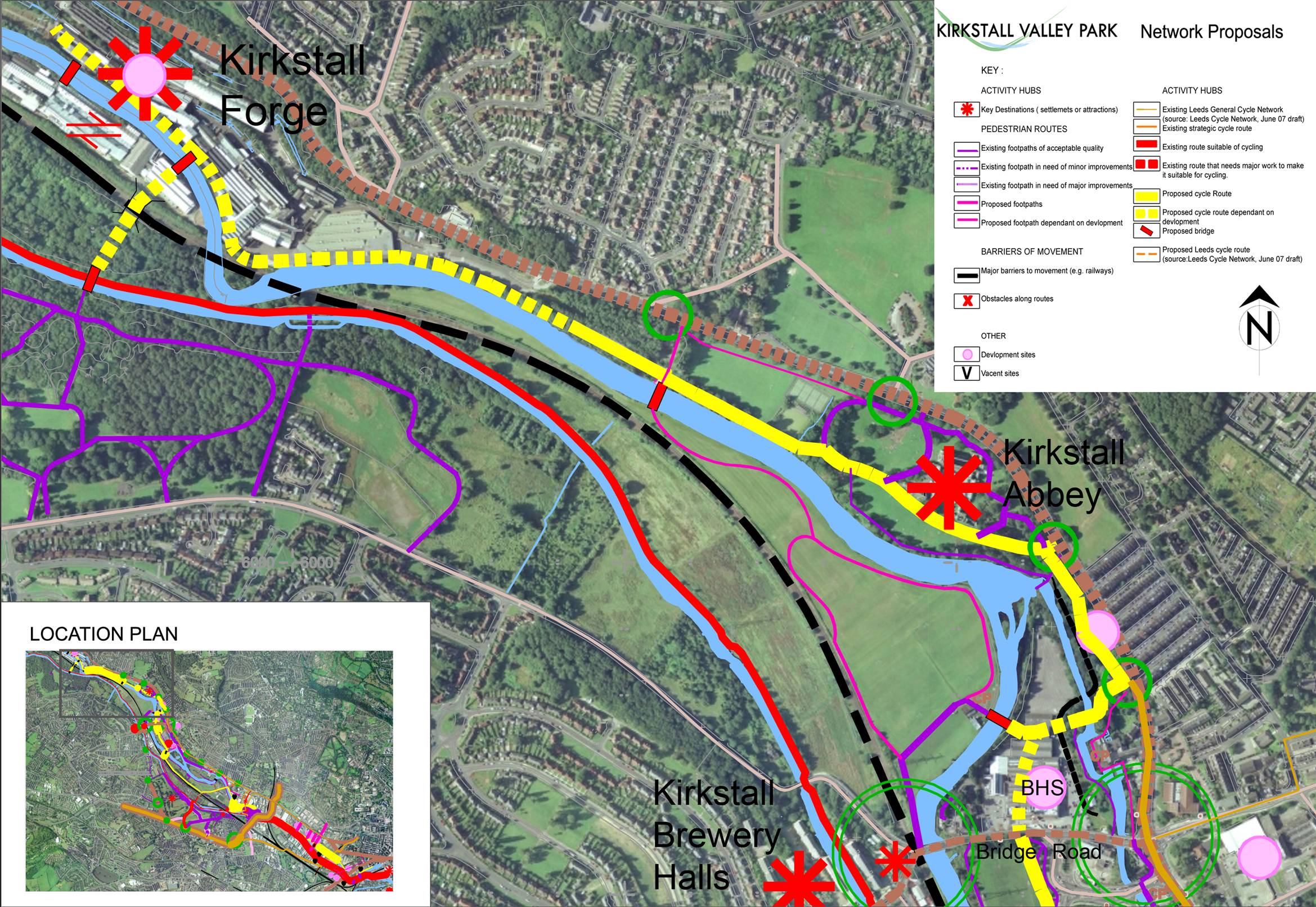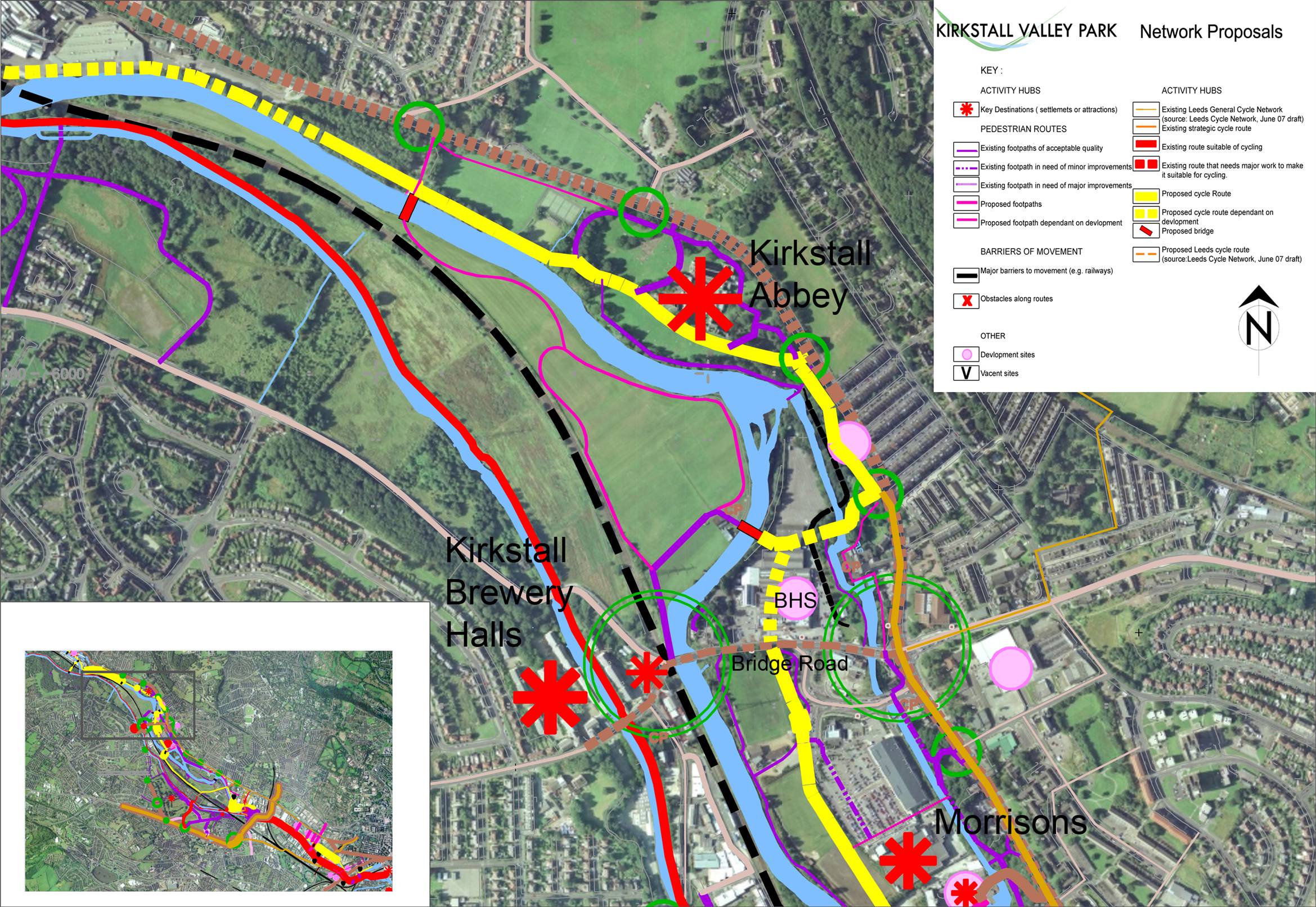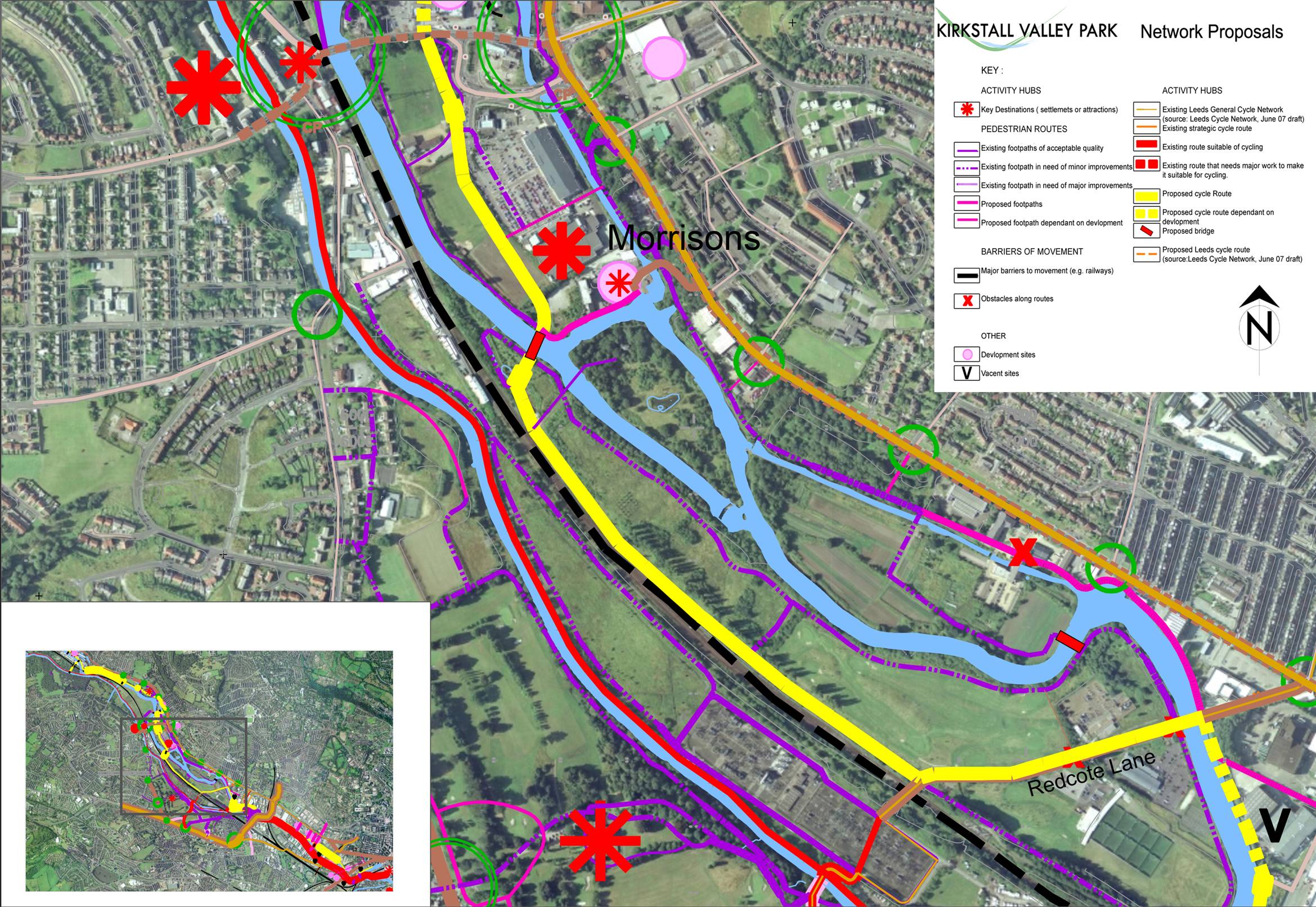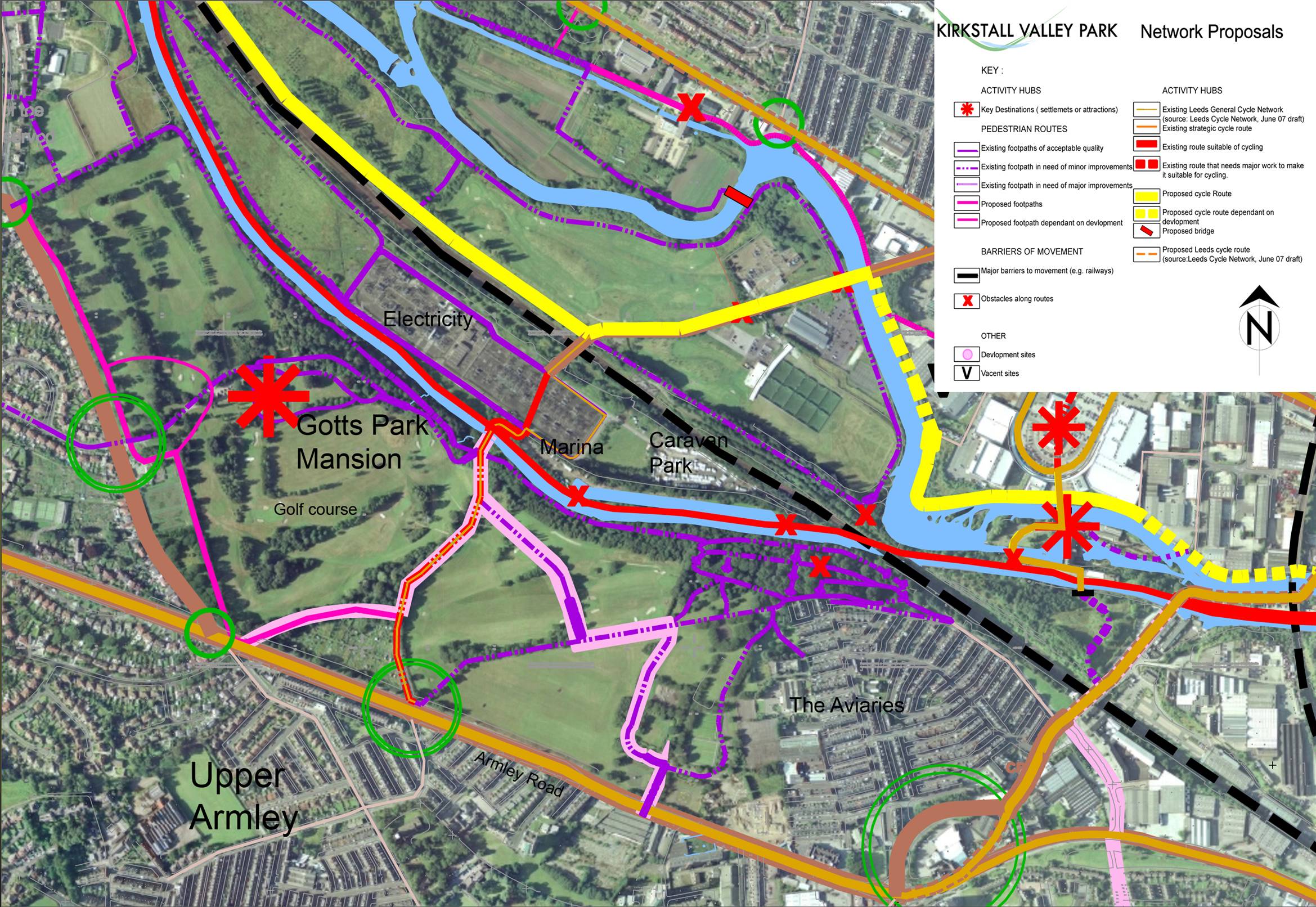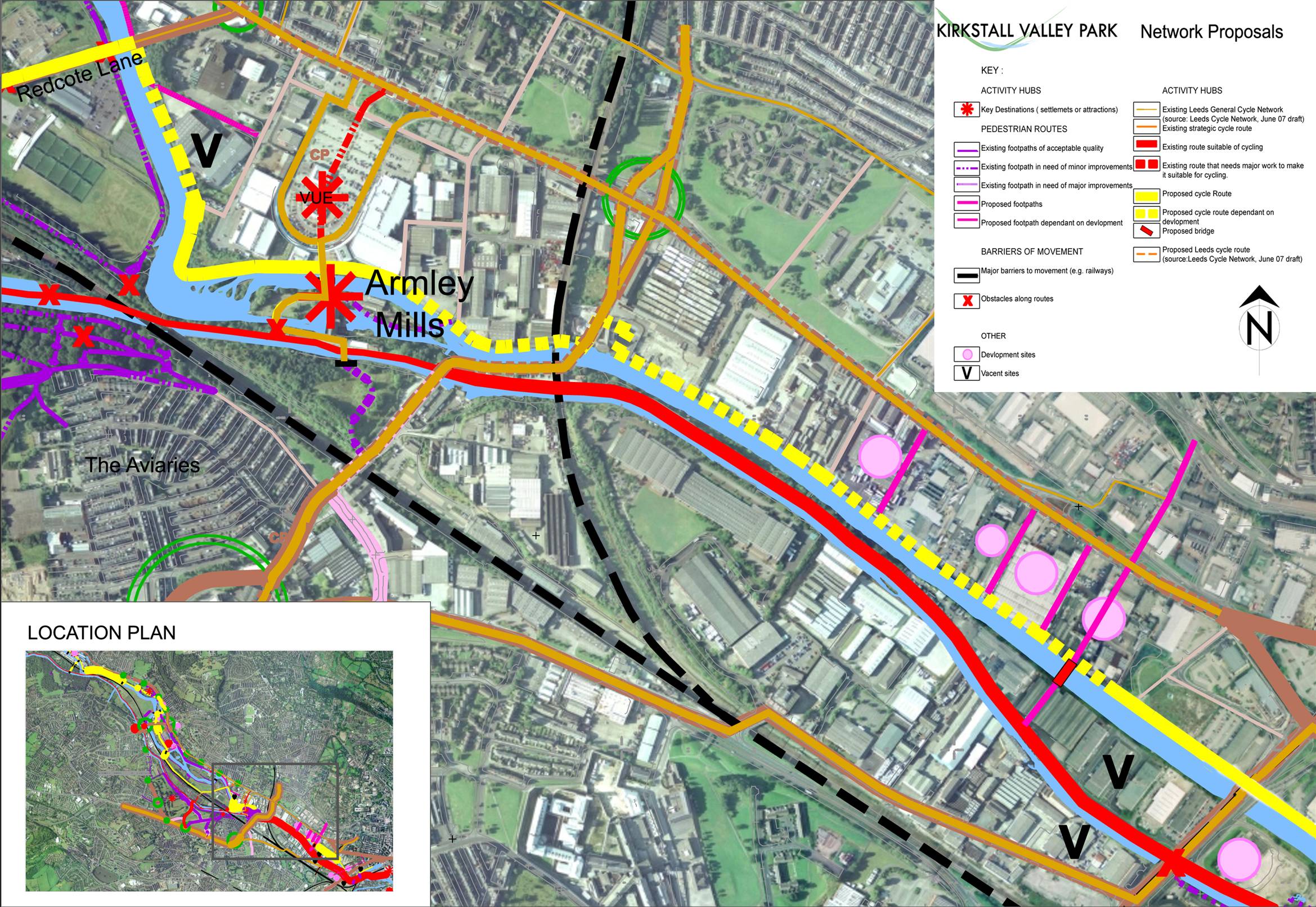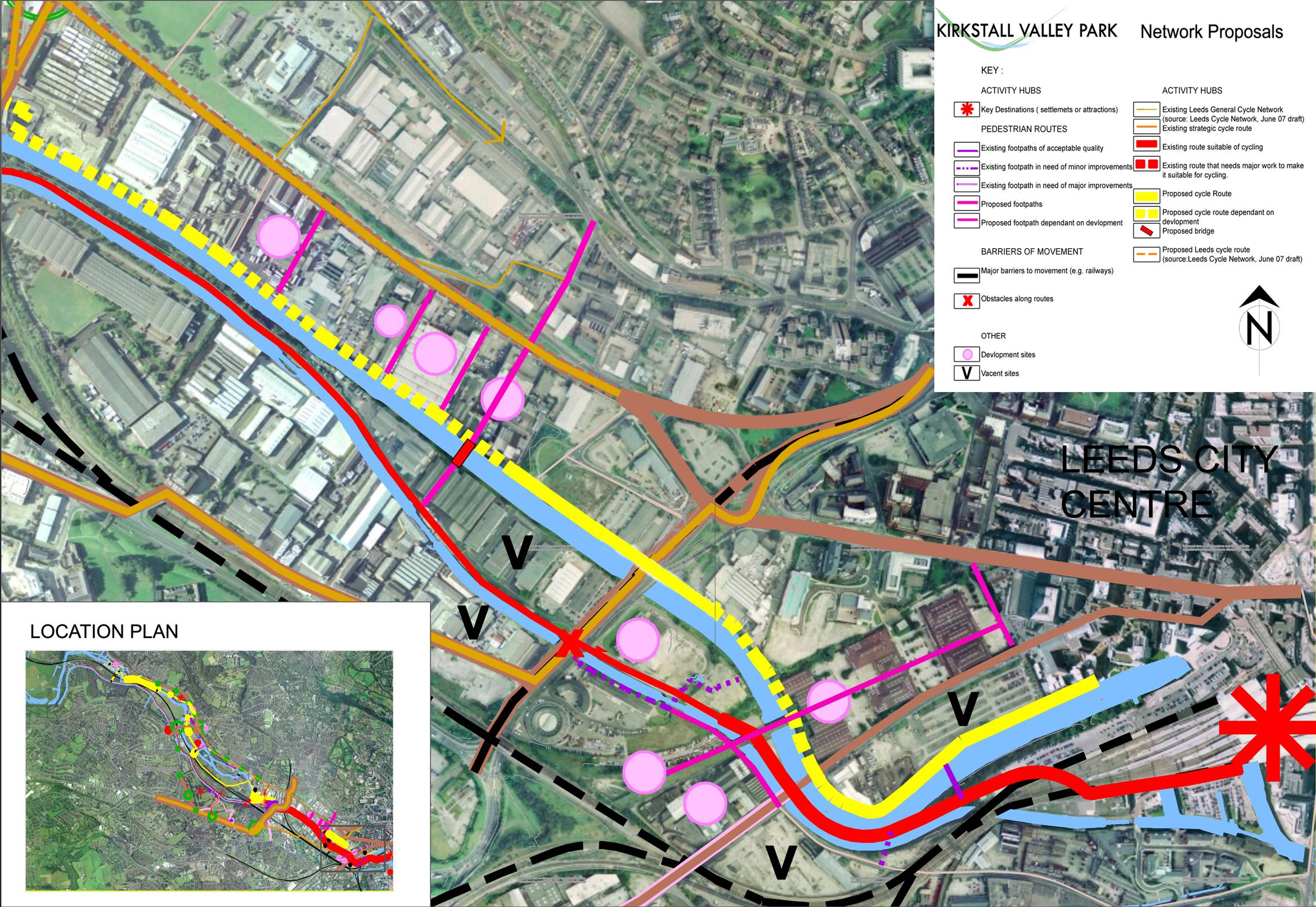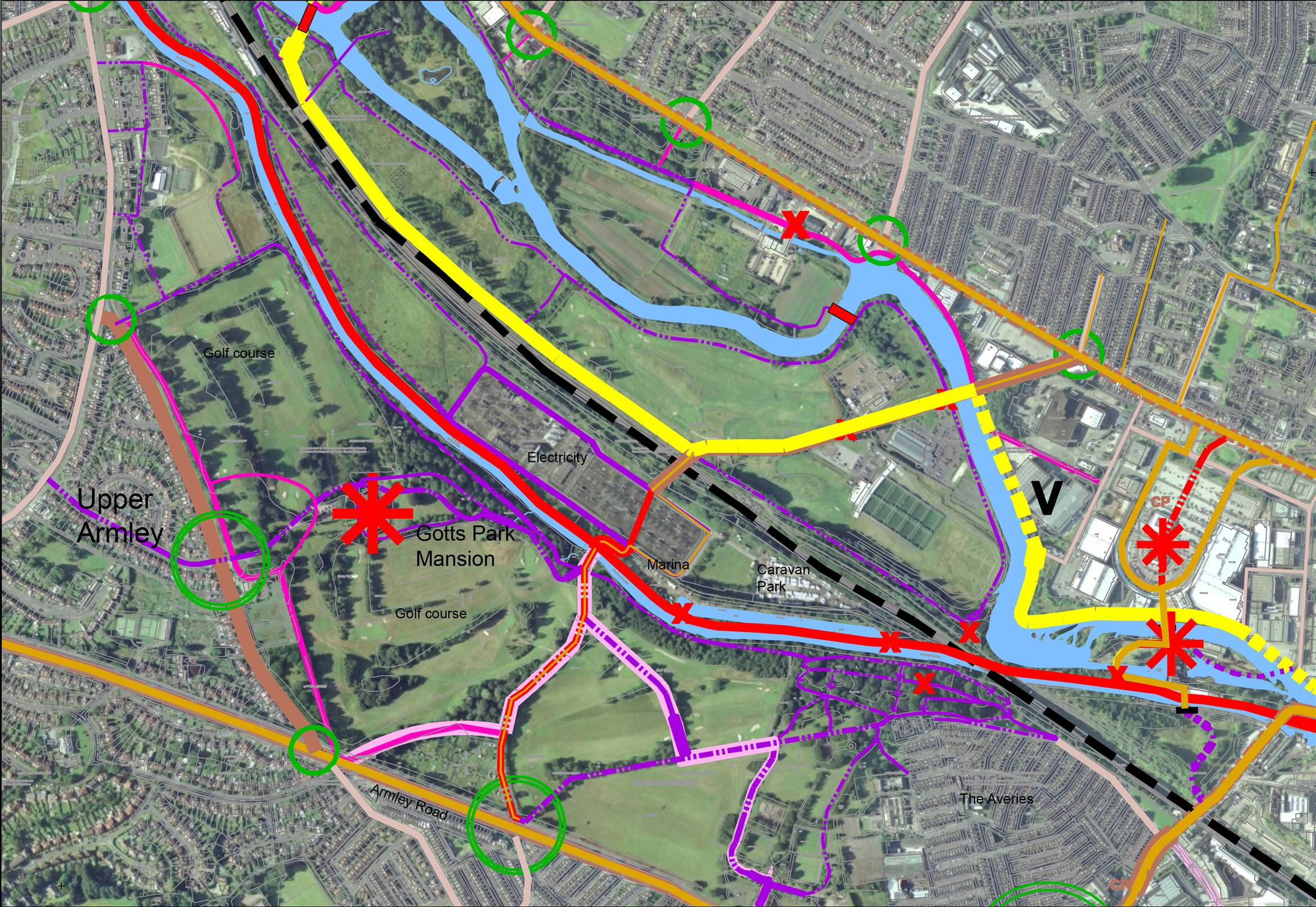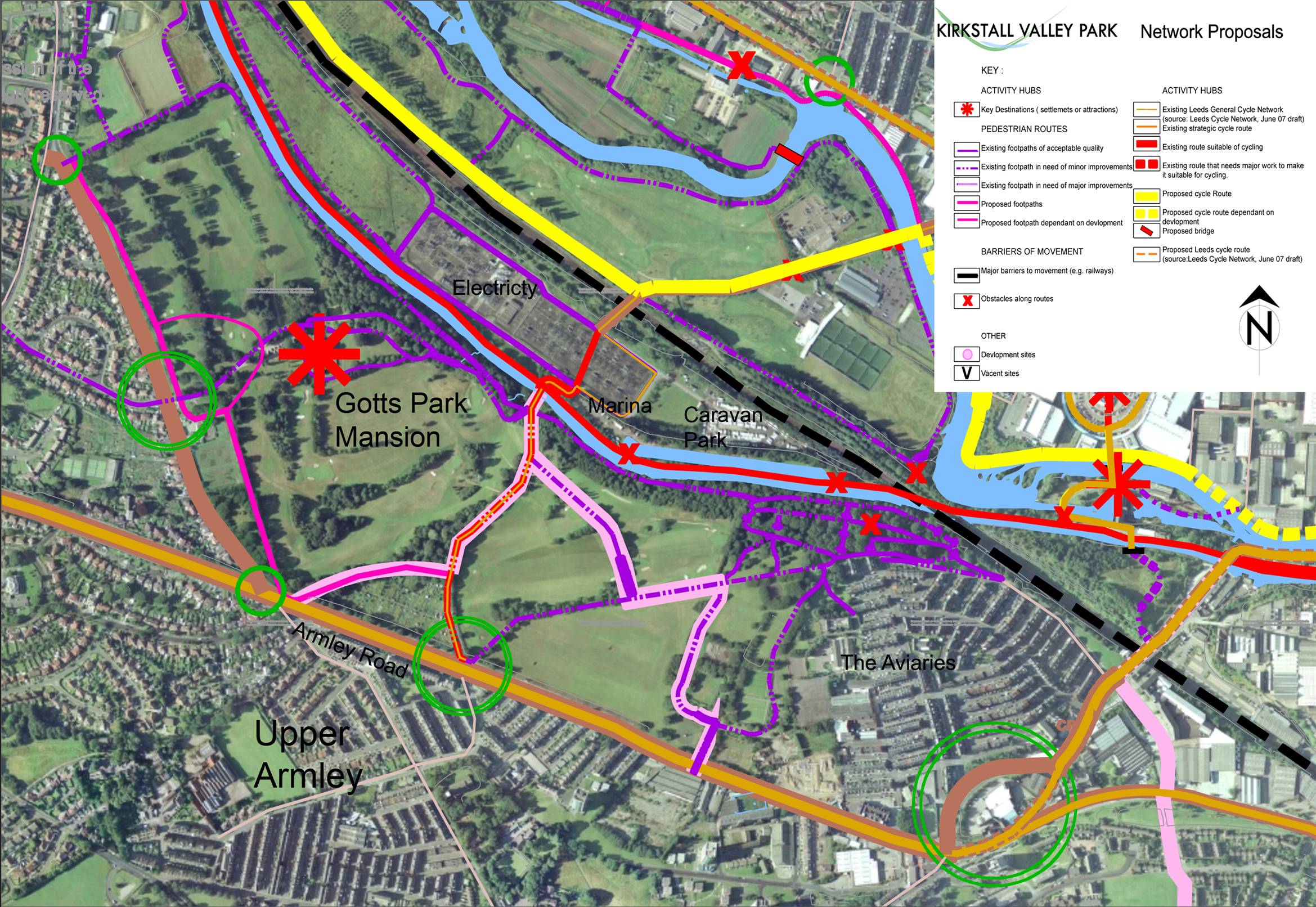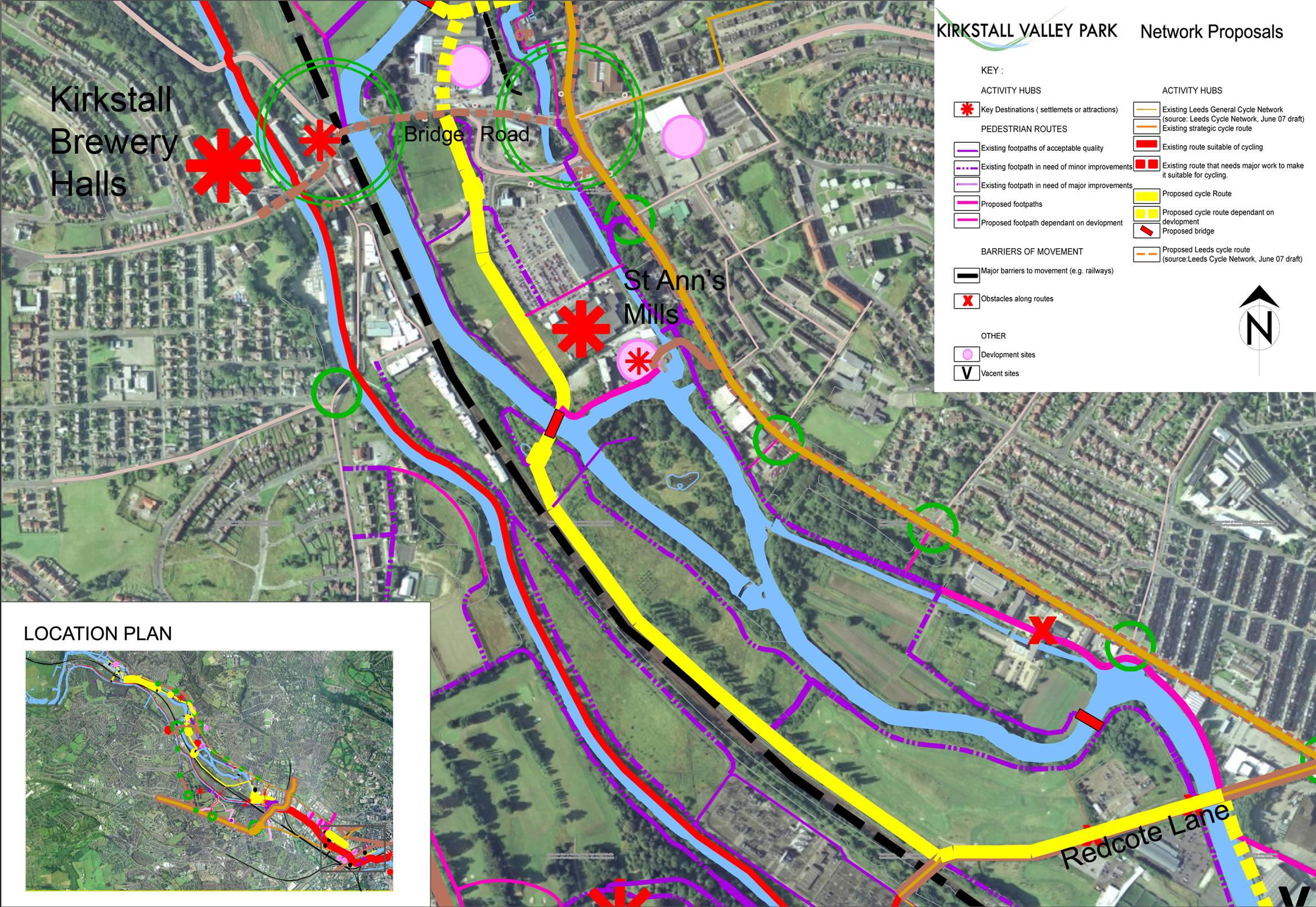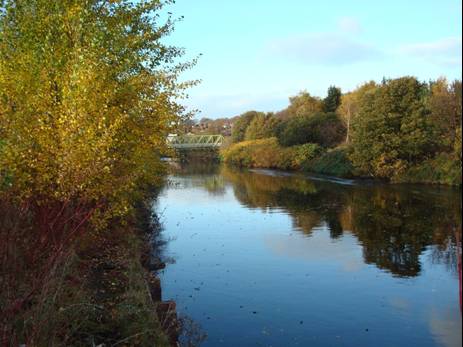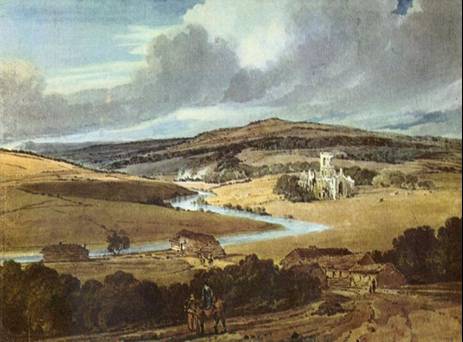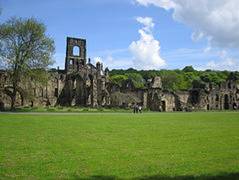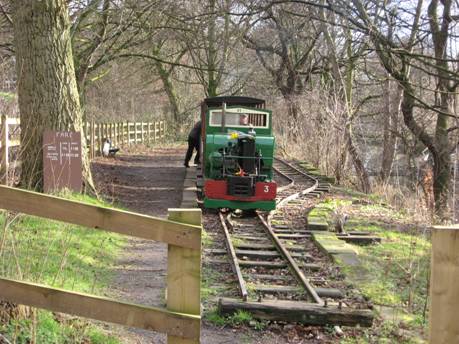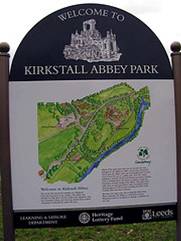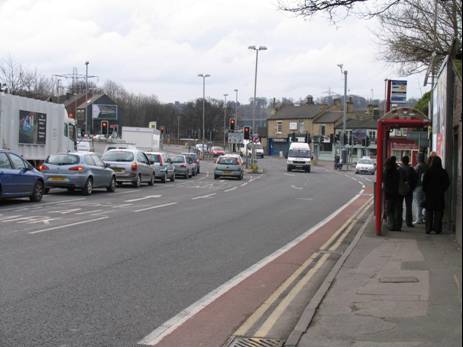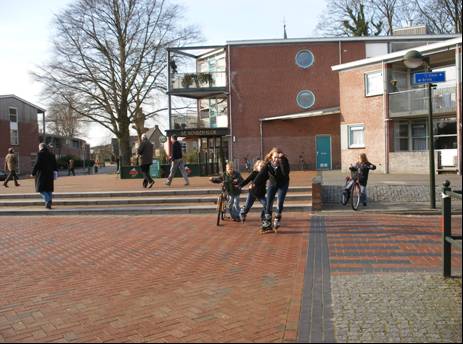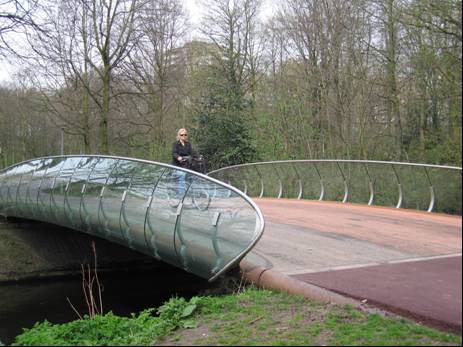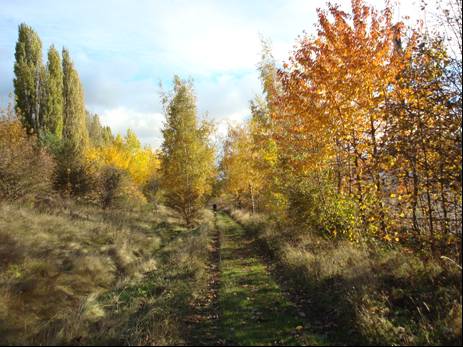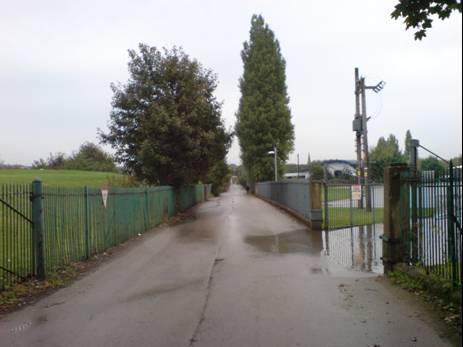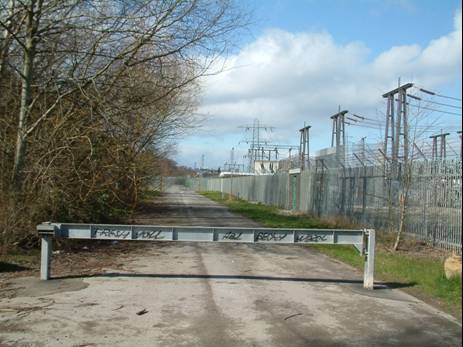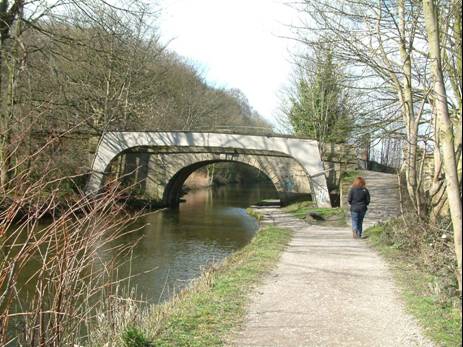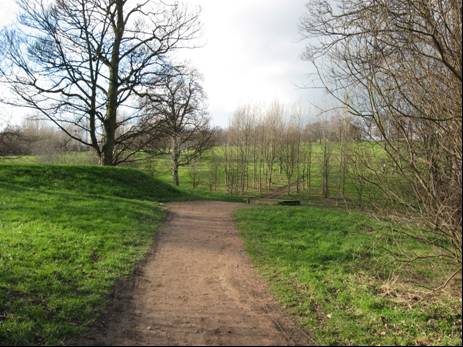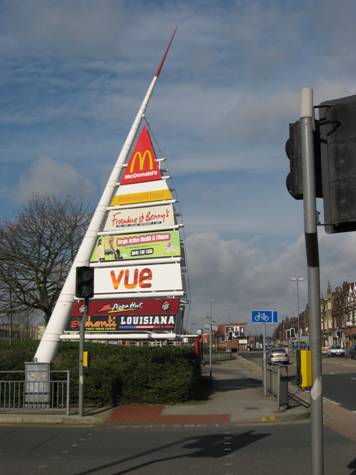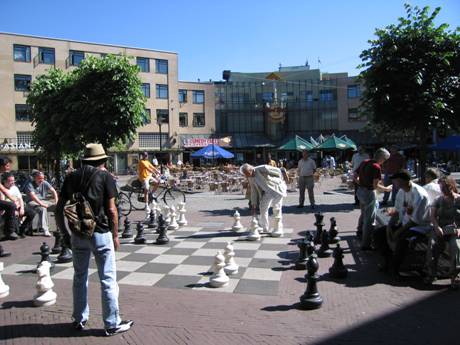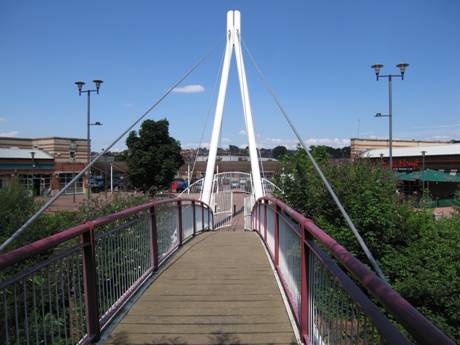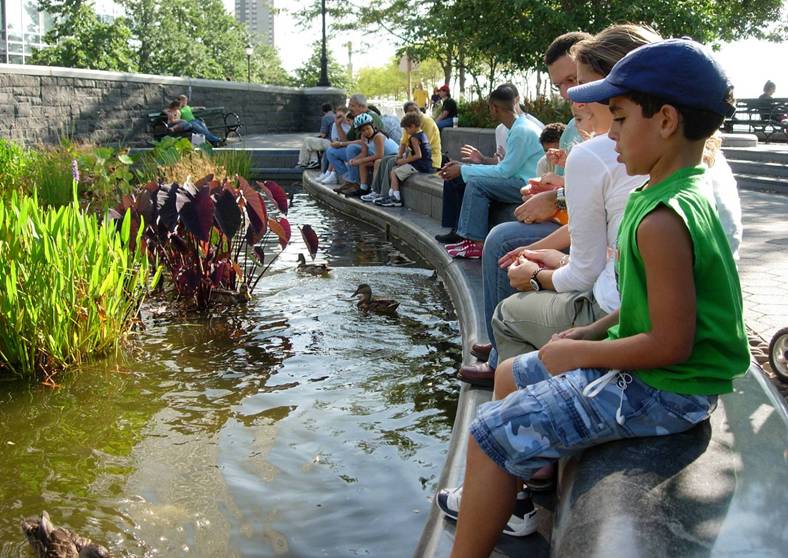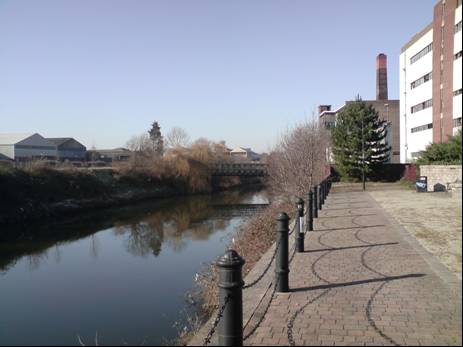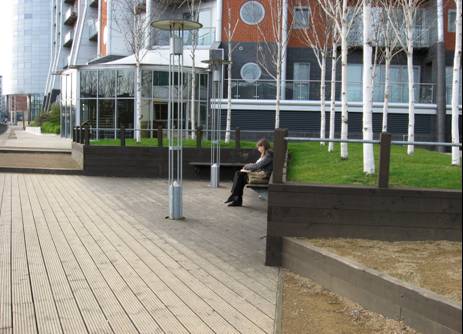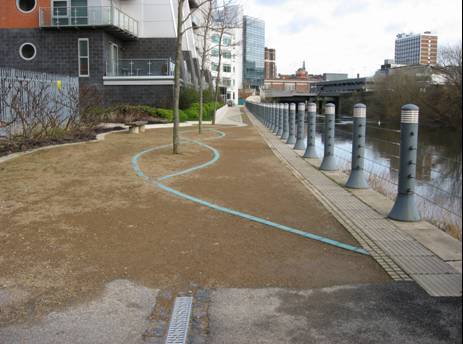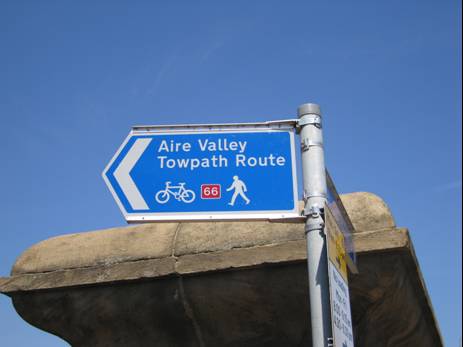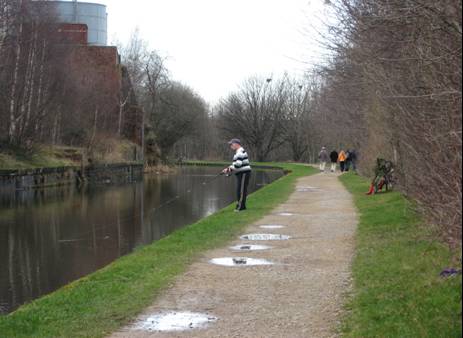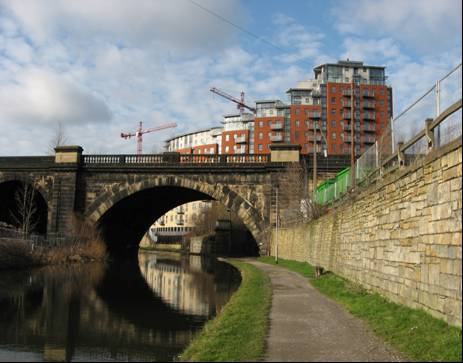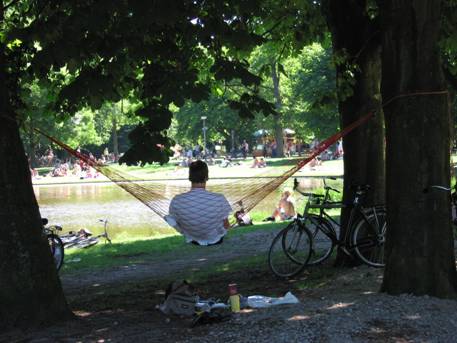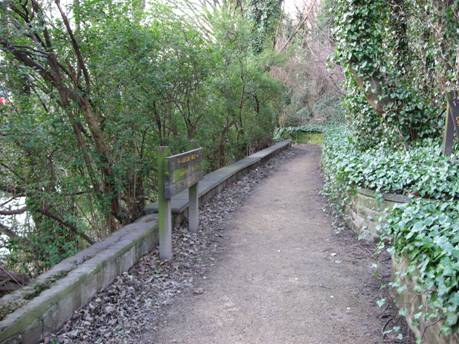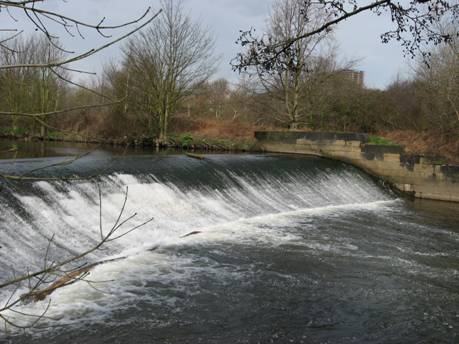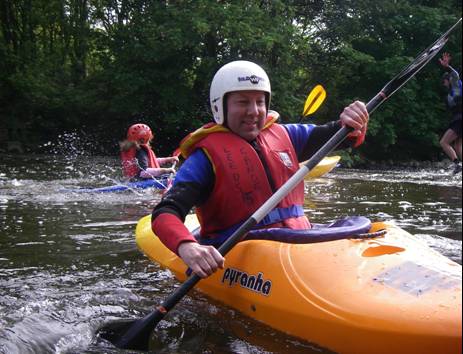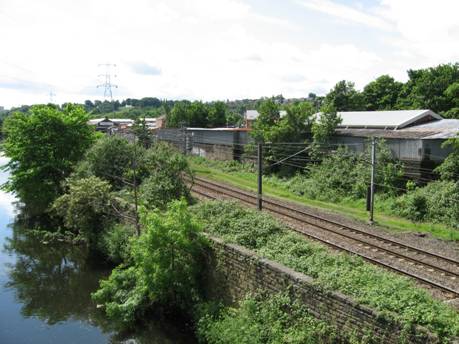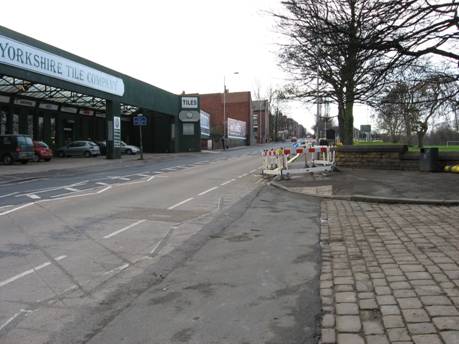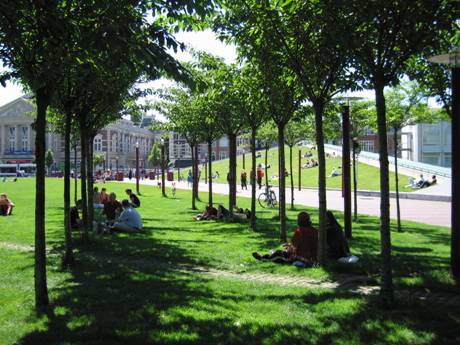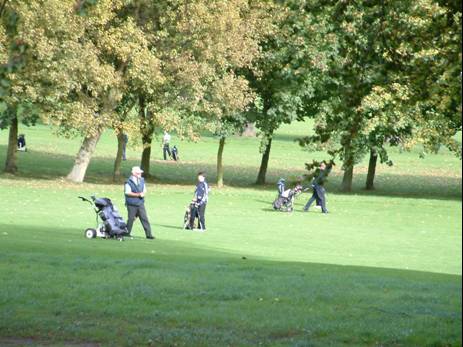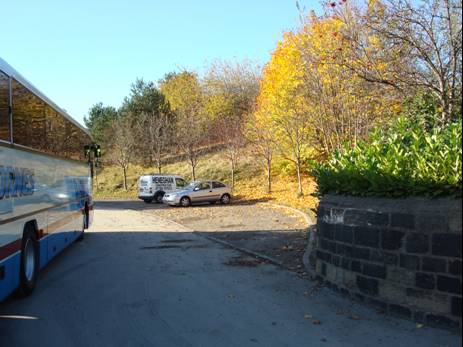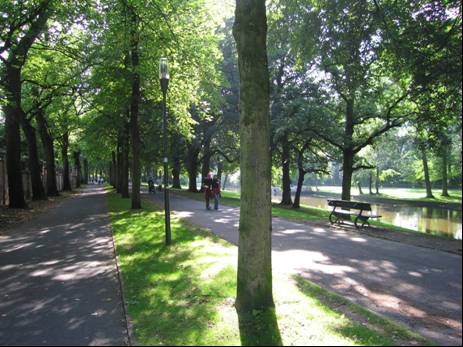The Towpath (Route 66 National Cycle Network)
This is an existing, generally flat route connecting the city centre with Kirkstall, Horsforth, Rodley and Saltaire. There have been improvements to the towpath in places particularly around Armley Mills and Kirkstall Bridge. The route is well used, especially at weekends. Shared use by walkers, cyclists and anglers creates conflict in places due to the narrow width of the towpath, and the lack of route options. The towpath should be widened where space permits, and existing viewing areas restored and improved. Adjacent tracks and connections, which decongest the route should be utilised. Better links are required because the route is linear, and poorly connected to destinations and amenities.
Existing signage is largely for canal users, showing links to Liverpool and should be augmented by local signage. Trees, shrubby and grassy vegetation require management to enhance the environment. Graffiti removal and rubbish clearing is necessary.
Route 66: Kirkstall Brewery to the Marina
Opportunities to connect the towpath to its surrounding area. It should be surfaced in durable materials e.g. tarmac.
Separate and direct cyclists and walkers by utilising the track for cyclists. The track runs up to and around the switching station from Broad Lane. Carefully manage vegetation to enhance the track and its separation from the towpath.
Create a discrete direct exit form the towpath to Broad Lane and car parks at the forge site.
Improvements to stepped ramps to allow wheeled vehicles to be pushed up across them.
Repairs needed to stone flagged areas around Armley Mills and clearance of Grafitti and repairs to lookout areas.
Character: The area around the Armley Mills should be carefully managed; paving to be stone, with sett trims, and plantings reveal spectacular views. The remainder of the path is to be surfaced using tarmac, with a soft grassy edge to the canal, except at landing stages. Vegetation to be naturalistic or native to enhance countryside character and create biodiversity. Grass seed to incorporate some wild flower species.
Detail: Interpretive and directional signage required. Repair losses to paving.
Environmental Management: Planting to be managed to reveal views, enhance biodiversity. Remove grafitti,
Route 66: Viaduct to City Centre
The towpath forms a continuous narrow route along the canal side, and connects to the city centre. It possesses striking views of the City and local historic features e.g. Botany Bay. The path is isolated and not well connected to its environs, and it feels unsafe, particularly under bridges, when not in peak use. The towpath should be upgraded where possible, through widening and improved surfacing. It should be connected to new routes that arise as development takes place with shared car parks incorporated.
Character: To reflect that of the adjacent new developments, Stone slabs, setts and seating around the lock.
Detail: Signage of routes and destinations at bridging/ entry points and in particular at the gateway to Holbeck Urban Village, the City Centre and the Railway Station. The path should be lit around and under bridges and along routes through development.
Environmental Management: Planting to be managed to reveal views, enhance biodiversity. Remove grafitti.
A65 and Goitside Walks
The A65 is a direct link from Kirkstall to the City Centre. However the road is very busy transport route carrying heavy goods vehicles and large volumes of traffic. It is a noisy, dusty and intimidating highway for both pedestrians and cyclists. Recently proposed improvements to the A65 are aimed at incorporating a quality bus route, cycle lanes and more pedestrian crossing points. However the heavy use of the road means that the pedestrian and cycling experience will only be marginally improved, and further improvements would be desirable, including opportunities to cycle off road.
A65 junction with Bridge Road
Recent changes to the road layout at Kirkstall Junction have given priority to vehicles at this particularly busy junction. Significant improvements still need to be made to enhance pedestrian use. These include widening of pavements particularly at crossing points and bus stops. Links to car parks at Morrisons and St Annes Mills should be incorporated.
The Goitside walks provide an interesting footpath on the north side of the park and parallel to the Kirkstall Road. They connect a number of interesting historical features; mills, and millrace, and potentially provide an alternative route to Morrisonís and the wider park. At present their condition is variable, with uneven terrain, poor surfacing and the edges are encroached by over grown trees and shrubs. The area feels unsafe, as itís poorly connected, overgrown and there is little natural surveillance.
Improvements from the Kirkstall Centre include the need for: better access, surfacing and signage, management of vegetation to open up views and allow paths to be overlooked from the road and St Annís Mills, and other development. Improve access points From Kirkstall Road, the key link to St Annís Mills and the Riverside. Establish new link adjacent to the home office buildings and farm area, connecting by the former site of Gotts Suspension Bridge. Restore/ replace the suspension bridge link to give access to Redcote Lane and A65 and local shopping area.
Character: The Goitside character should be retained as a sheltered small scale park with glimpses to the broader landscape and screening to the A65.
Detail: Improvements to surfacing and signage are required.
Environmental Management: Planting to be managed to enhance views and increase bio diversity.
| 

